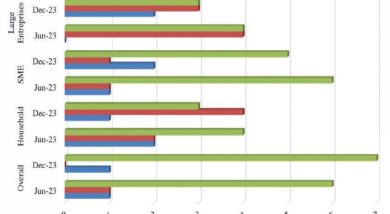Does cotton hold key to diversification drive in Malawi?
 Cotton, alongside tobacco, tea, sugar and maize, is one of Malawi’s strategic crops. The crop has business linkages right from the field to ginning, spinning and weaving and to textiles manufacturing plants, experts say.
Cotton, alongside tobacco, tea, sugar and maize, is one of Malawi’s strategic crops. The crop has business linkages right from the field to ginning, spinning and weaving and to textiles manufacturing plants, experts say.
Besides the cotton industry having potential to create jobs, the crop produces a variety of products which can contribute to industrial production and generate foreign exchange for the country.
Malawi export base has, for a long time, remained narrow and the country continues to rely on the same traditional exports of tobacco, tea, sugar to shore up its foreign exchange cover.
On aggregate, the export value has not kept pace with import demand.
Malawi’s exports represent 20 percent of gross domestic product (GDP) while imports are the equivalent of 39 percent of GDP, creating a trade deficit equivalent to 19 percent of GDP.
Trade experts say this trade deficit has resulted in dwindling international foreign exchange reserves and foreign exchange shortages which have brought in procurement challenges of strategic imports particularly fuel and medical drugs.
In the 2011/12 budget, as part of promoting the cotton agenda, government allocated K1.6 in billion (about $5.3 million) to boost the crop’s production.
In the 2010/11 marketing season, the sector witnessed a surprisingly good year for the cotton industry in terms of prices.
Cotton lint fetched as high as $5 (K1 700, at the current exchange rate) per kilogramme in export prices while local prices for seed cotton surged from as low as K30 per kilogramme last season to about K120 per kilogramme this season.
With the allocated money, government envisaged to increase the crop’s growing land size to over 200 000 hectares to generate over $300 million of foreign exchange in the next 12 months.
In the 2012/13 budget, government has also indicated that it will continue to upscale cotton production and K240 million has been allocated for the cause.
Minister of Agriculture and Food Security Professor Peter Mwanza said government wants to increase the output from this year’s over 100 000 metric tonnes to 140 000 metric tonnes next year.
“We want to ensure that the crop’s contribution to the foreign currency buffer is increased. We also want a number of farmers to benefit from the value chain of the crop,†he said.
Mwanza said from about 418 000 farmers who grew the crop last year, government’s intention is to reach out to more than 500 000 farmers.
“We understand the crop has huge potential economically, but has not been given the attention it deserves,†he said.
In future, government plans to establish a cotton fund whose proceeds will come from an K8 per kilogramme levy from the sales of seed cotton bought by ginners.
But experts have cautioned that farmers should not suffer the pass through effects of the levy by having their crop bought at below market prices.
Last year, government set the minimum prices of the crop at K78 per kilogramme for grade A, K3 up from last year’s K75 per kg. Grade B has been put at K63 per kilogramme, K7 down from last year’s K70 per kilogramme.
But Cotton Farmers Association (Cofam) member Steve Dodoma has observed that the cotton agenda government want to advance should not sideline the farmers but should be taken on board along the whole process.
“We want to be consulted on what we want to see happening for the success of the crop. For a long time, farmers have been the main losers in the in the cotton value chain because our crop is usually bought at below market prices, yet we are the producers,†he said.
Over the years, Malawi has been producing less than 50 000 tonnes of the crop due to among others, poor crop husbandry and less hectarage on which the crop is grown.
But the up scaling initiative government has put in place, there is hope that the land on which the crop is grown could increase and, in turn, bring in more revenue.




